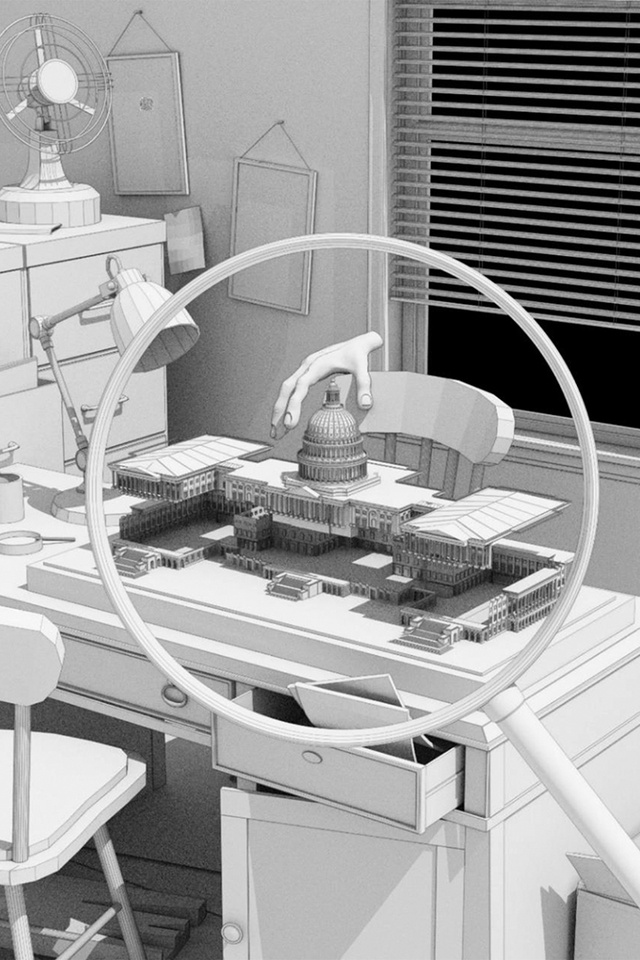A complex ecology
I think this column might be bad. Just, I guess, to show my hand from the outset. As I wrote that, I realised that you may be a reader who has found that my columns have all been bad... in which case, this column might be doubly bad. Apologies for whichever reader category you identify with.
I am, in this column, discussing economic policy as it pertains to housing, as I understand it. This is why the column might be bad, with regard to me discussing economic policy, from the perspective of the layperson. Still, I wanted to find an entry point into the thinking that is driving housing policy because, despite my earlier arguments that the future of housing in Aotearoa New Zealand could be either made or broken in the profession, which is cause for both excitement and discussion, or that numbers do not make homes, the profession is one part of a complex ecology, of which there are many levers. And, often, it feels as though the only ones that make things happen are the financial ones.
While earlier columns have crossed into spheres with which I have had some familiarity, economic policy is still well outside my field. That said, widening the lens with which we focus on housing requires taking into account (even if, at first, very foundationally) economics and policy. I have heard more than one expert flat out declare that there is no fixing the crisis and for different reasons.

Senior lecturer in urban planning at the University of Auckland’s School of Architecture and Planning Dr Elham Bahmanteymouri argues that policy, over the past 40 years, demonstrates a commitment to capitalist logic, whereby flows of capital create inflation in housing, which a neoliberal economy considers as wealth and, thereby, an asset. She states: “This capitalist mechanism is designed to commodify and sustain the problem. Until that changes, the problem won’t be solved.”1 And, yet, if we don’t address housing now, well, it’s not good. So, if it’s not good, and the profession has agency to influence outcome, what then are the economists and policy-makers doing about the levers their hands are operating?
It can be a challenge to carve out the time to grasp what exactly is happening. There is also the disciplinary divide; terms like ‘rising inflation’ and ‘liquidity constraint’ remain somewhat abstract for me. I certainly am feeling it; everything seems to be becoming nonsensically expensive but, as for what is happening in The Treasury or the Reserve Bank, it might as well be the Gringotts Wizarding Bank in Harry Potter. So, what to do about limited knowledge in an area that impacts housing? Where would one start in order to give oneself a policy tutorial?
“Over the past 20 to 30 years, the rise, and rise, and rise of New Zealand house prices has really bested many economic forecasters and policy-makers in New Zealand.”
-Dominick Stephens, Te Tai Ōhanga
Well, this Generation X’er watches YouTube. I am not yet brave enough for the knowledge transmission of TikTok. Whilst shining my Generation X torchlight around the videos on the internet, I discovered a panel discussion with Dominick Stephens of Te Tai Ōhanga – The Treasury Deputy Secretary and Chief Economic Adviser – and Leilani Frew, also at The Treasury as Deputy Secretary, Financial and Commercial, who is responsible for the Capital Markets and Commercial, Infrastructure and Urban Growth teams of Te Tai Ōhanga.2 Also on the panel is Brad Olsen, the principal economist and Director at Infometrics, an economic consultancy. Infometrics’ website says that it is the country’s leading consultancy; the people there could be wizards. Who knows?
The discussion allows each to present their views on policy shaping the country’s future housing and infrastructure. Stephens begins with an admission: “Over the past 20 to 30 years, the rise, and rise, and rise of New Zealand house prices has really bested many economic forecasters and policy-makers in New Zealand.” This is bitter-sweet for me in that it feels that perhaps my layperson’s understanding of the relationship between the housing crisis, economics and policy is shared by those in the know but it is a bitter aftertaste that those who ought to know, don’t really seem to. And this gap in accurate predictions has resulted in dire consequences for the country’s most vulnerable. He summarises, in part, that a critical aspect is that deposits are unattainable and this is one of the levers the country needs to move to shift the crisis.
“The environment itself doesn’t actually want to. Because, while we see shifts in interest rates and Kāinga Ora’s housing caps, I cannot help but feel it is the ecosystem rather than its gateways that call for review.”
-Karamia Müller
I can’t help but feel that Bahmanteymouri’s sense of things, while grim, may be the reason the rise and rise and rise has not been adequately answered. The environment itself doesn’t actually want to. Because, while we see shifts in interest rates and Kāinga Ora’s housing caps, I cannot help but feel it is the ecosystem rather than its gateways that call for review. Still, it is the perspective of Frew that gives me reason for pause. She sketches out the relationship between infrastructure and housing as one that can be understood as “where do people want to live, work and play?” While I have spent some time in earlier columns mapping socio-cultural contours in the housing landscape, I think this question is interesting in that housing then becomes a piece in a larger puzzle of what sorts of investment lift the country’s living standards.
To Frew, housing is where one can make a home for oneself, while infrastructure is all the things we need to be connected. She emphasises, too, that the future of the whole ecology is dependent on capacity and capability. The subtext to that text seems to be that there is not enough of either right now. Words like capacity and capability are terms that I once would have thought stripped the poetics out of space and out of the practice of it. Compelling and wonder-full urban spaces and residential buildings find the balance between intrigue, play and function. I have the sense that the future of housing is asking us to do just that: to consider the ways in which our profession engages across sectors and disciplines, as part of a whole ecology with a citizen and professional mandate. Capacity and capability is the shorter way of saying: a profession with people who can confront the challenge at hand, even if the answers are not clear, and we have not found them yet. I think this may also be a way of saying: preparing to make brave decisions about new ways of doing things. It may involve getting on TikTok.
View the panel discussion below:
1 Bahmanteymouri, Elham, ‘Can we ever solve Aotearoa’s housing crisis?’ News and Opinion, University of Auckland. Accessed 11 August 2022. auckland.ac.nz/en/ news/2022/05/16/ taking-issue- housing-crisis- ingenio.html
2 The University of Waikato, Housing and infrastructure. From YouTube. Posted by The University of Waikato, 1 March 2022. youtube.com/ watch?v=OFsuv W2wnoA










